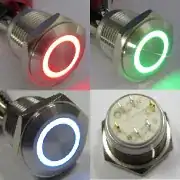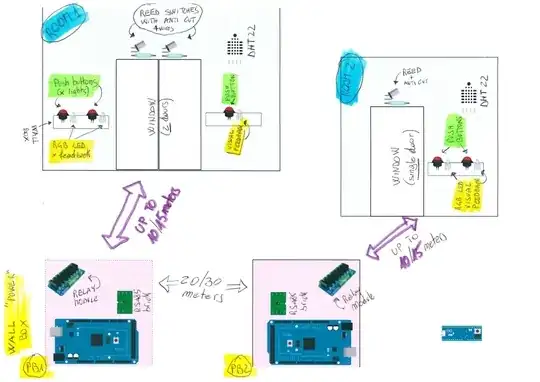As already mentioned in another question, I'm spending LOT of time planning the home-automation system for my new house (currently still in the "still building" phase).
Even if started only as a "lights/switch management project", things started getting bigger and bigger and, at the moment, in addition to original requirements, I already have:
- A reed switch including cut-detection wires (for a total of 4 wires) installed on every single window (one switch for single-windows; two switches for dual-door windows);
- planned the location of a DHT22 sensor in each room.
In addition to the above, I'm currently evaluating the opportunity to add a single RGB led to have visual-feedback for each push-button (something like: GREEN=>LIGHT/OFF; RED=>LIGHT/ON). More specifically, I'm evaluating the opportunity to replace common/simple pushbuttons with these:
Obviously, such a change will heavily impact the cabling, as:
original simple/pushbutton required only two wires for each pushbutton, with one wire potentially shareable among adiacent pushbuttons (I'll be using "internal pullups", so one wire will be GND)
RGB pushbuttons require six wires (GND and SIGNAL for pushbutton; R, G and B plus COMMON for LED), with only two wires potentially shareable among adjacent pushbuttons (GND and COMMON).
Adding to this that it will be easy to have wall-boxes hosting two, three or even four pushbuttons, and you easily understand that LOTS of cables are required!
Here below I'm attaching a rough schema of what I'm planning to build, in terms of hardware:
where you can see:
ROOM 1, with:
- 2 x reed switch (up to 8 wires);
- 1 x DHT22 (3 wires);
- a wall box with two pushbuttons/wLED (up to 12 wires);
- a wall box with one pushbutton/wLED (up to 6 wires)
ROOM 2, with:
- 1 x reed switch (4 wires);
- 1 x DHT22 (3 wires)
- a wall box with two pushbuttons/wLED (up to 12 wires)
Also, as for "controlling" the whole system:
- two POWER-BOXES, located externally to rooms, where I originally planned to host the "controller" (a MEGA2560) together with needed Relay-modules, and interconnected via an RS-485 bus.
(BTW: actually, I'll have three POWER-BOXES, and not only TWO. But this is a detail, as for the spirit of this question).
Please note that POWER-BOXES (PB1 and PB2) will be located (...as for the original plan) quite FAR from some rooms: up to 10/15 meters, in the worst case scenario. Also, please note that each power-boxes are far up to 10/15 meters from each-others.
Before the real question, let me add another couple of important points:
Even tough I know that some kind of wireless system and/or wireless segment could simplify my overall architecture, I'm a strongly believer that a "wired" system is more reliable than a "wireless" one, expecially in the long-term. As such, as I'm lucky enough to put down lots of "pipes" (to properly distribute cables all around the house), I really prefer a wholly wired system;
As for this question, I'm not interested in the "software" side of the system. This is really an accessory (again, as for this very question). My really_big_problem relates to the "hardware" infrastructure to put in place. That's why I'm posting this question here.
After the all of this, here is the question:
As for your experience and knowledge:
- should I stick to original plan, having an RS-485 multidrop-bus interconnecting only the MEGAs, with "signal" cables going directly from room-hardware (pushbuttons, reeds, DHT22, etc.) to the MEGA PINs ....
or
- should I add some other Arduinos (a Micro seems a really good candidates) in each room, terminating all the signal-room-cables coming from room-hardware, and speaking with MEGAs via the same RS-485 bus?
In the first case, I'll have a real simple RS-485 bus with a mess of cables; In the second case I'll have a _longer_and_more_complex_ RS-485 bus, with a much manageable network cabling/infrastructure.
Am I right? What are the PROs and the CONSs of above two scenarios? Should I investigate other approaches?
Are there some documentation that can help me picking the right solution?
Thanks in advance to all of those who will spend some (precious) time helping me in this really difficult decision to take!
BTW: if you need further details, please don't hesitate to ask.

